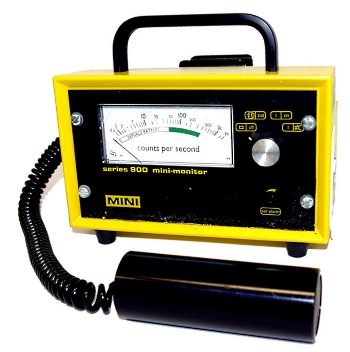property>radioactivity
What is Radioactivity?

Radioactivity is the property of some elements whose atomic nucleus spontaneously loses electromagnetic energy because of instability. It was discovered in 1896 by French physicist Antoine-Henri Becquerel. In this process different ionizing particles and electromagnetic radiation are emitted from the nucleus. Many elements do this naturally giving rise to natural radioactivity.
The time for radiation to decay varies from element to element and also depends on their isotopes, and is measured in terms of a half life which varies depending upon radioisotopes. The half life tells us how much time it will take for an element to decay to half the amount of radiation. Some elements like uranium and thorium continually emit radiation and ionizing particles which result in different daughter elements by releasing energy in the form of alpha ,beta and gamma radiation.
One of the most important radioactive elements is Radon, which is a dense colourless and odorless gas with a boiling point of -61.8°C (-79.2°F). Radon dissolves in water easily below its boiling point, and freezes at low temperature.
The three types of radiation are listed below:
Alpha Radiation
Alpha radiation consists of alpha particles which are helium nuclei consisting of two protons and two neutrons, which have a positive charge, and can consequently be deflected in a magnetic field. The radiation can produce burns on the human body.and is also capable of inducing artificial radioactivity in some elements. Alpha radiation can pass through thin metal foil (and occasionaly the particles will be deflected as they hit the nuclei of the atoms in the foil), but can only pass through air for a small distance before being absorbed. Alpha radiation has only limited ionization power but is capable of stimulating fluorescence in some elements.
Beta Radiation
Beta particles are electrons and have negative charge so are also deflected by a magnetic field. Beta radiation produces fluorescence and will affect photographic materials, but has little ionizing power.
Gamma Radiation
Gamma radiation has considerable penetrating power although it can also be absorbed by many materials such as lead. It is electromagnetic radiation like light but at a higher frequency. When incident on metals it causes electrons to be emitted, and is capable of producing weak flourescence when it impinges on a screen coated with barium platinocyanide.
Uses of Radioactivity
Radioactivity has many applications in the medical field and is used to sterilize instruments and food, and also in the treatment of cancerous tissue. Radioactive elements can also be used as tracer to detect disease and also in the study of plants and animals. Radioactive elements can be used to generate heat and electric power for industrial processes or for satellites, in addition to the more obvious use in nuclear reactors where heat is used to produce steam which is then used to generate electricity.